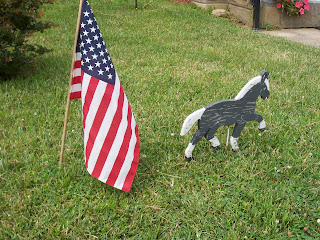Stream Valley
A few days ago I walked a small section of the Cross County Trail, from Miller Heights to a rock bridge across Difficult Run. I was pretty close to Vale, I think, and I paused to read a sign about stream valleys and their value to indigenous people: rich soil, nuts and berries to forage, animals there for the same purpose and ripe for the hunting. Obviously water there, too. These green secluded places were early hunting and fishing grounds. They were home.
Now these same places are helping save the area as it once was; it is through the stream valleys that the Cross County Trail (which runs from one end of the county to the other) is threaded.
We walk the paths our ancestors walked. But we walk for different reasons. We walk our dogs; we walk for health. Our livings are made elsewhere. We work for money. We work for prestige. We come to the trail to work out.
But the shaded packed dirt of the Cross County Trail may yet give us back our lives. Or at least it may give me back mine — by helping me learn to love the place I’ve landed.
